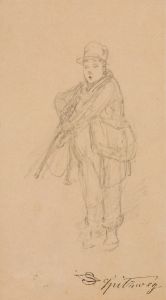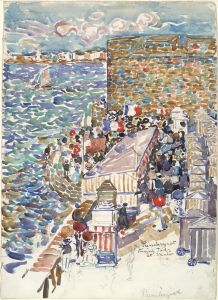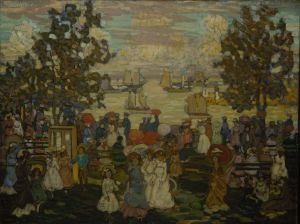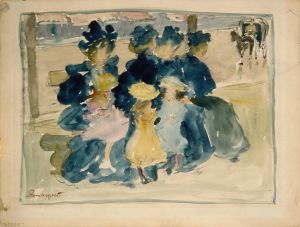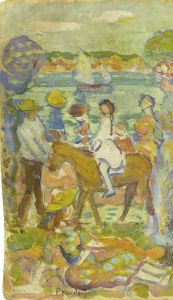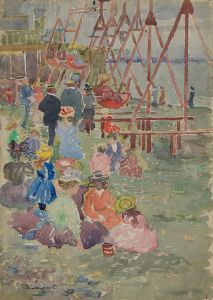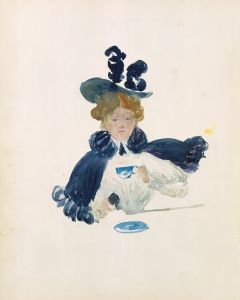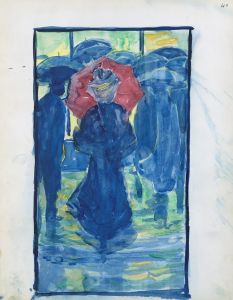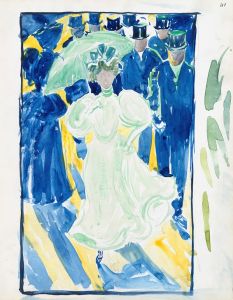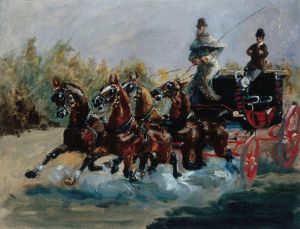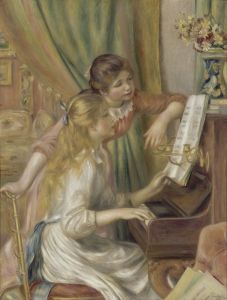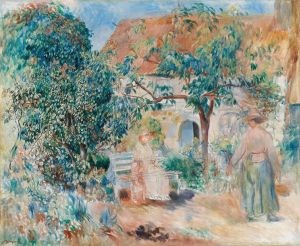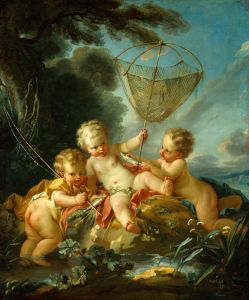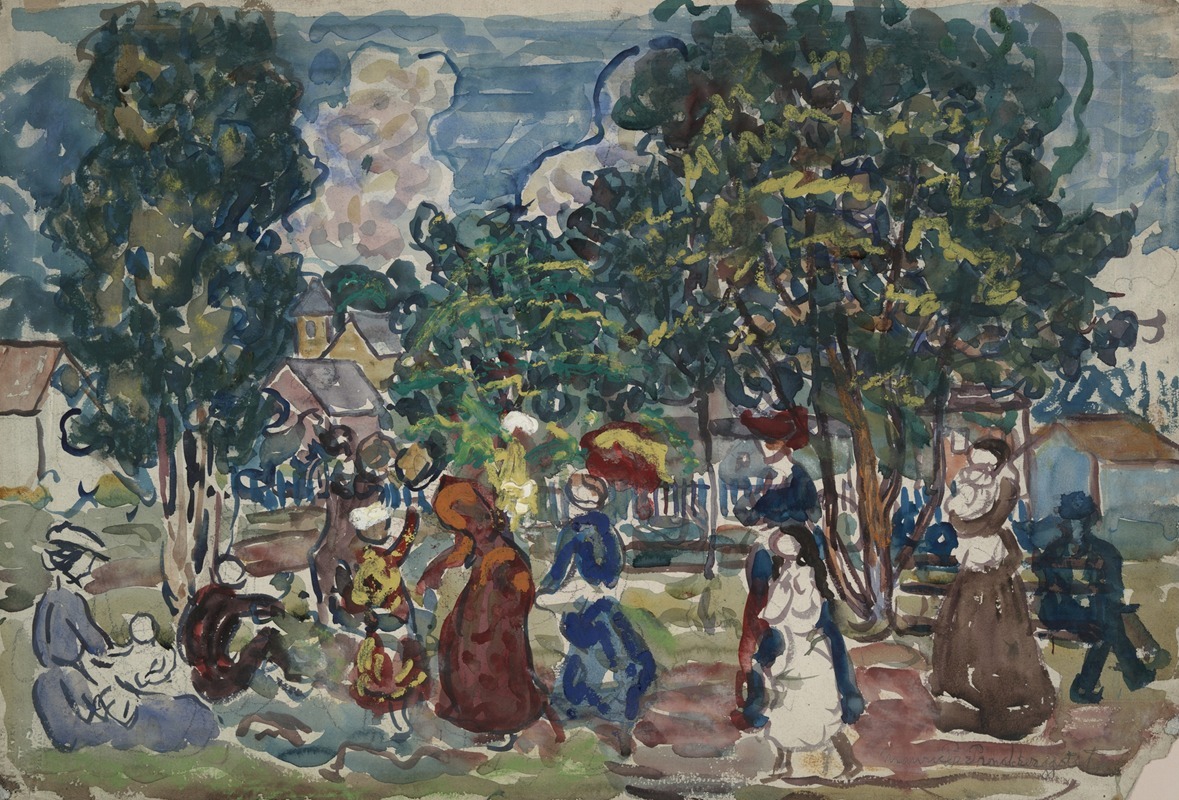
Sunday Promenade
A hand-painted replica of Maurice Prendergast’s masterpiece Sunday Promenade, meticulously crafted by professional artists to capture the true essence of the original. Each piece is created with museum-quality canvas and rare mineral pigments, carefully painted by experienced artists with delicate brushstrokes and rich, layered colors to perfectly recreate the texture of the original artwork. Unlike machine-printed reproductions, this hand-painted version brings the painting to life, infused with the artist’s emotions and skill in every stroke. Whether for personal collection or home decoration, it instantly elevates the artistic atmosphere of any space.
Maurice Prendergast's "Sunday Promenade" is a notable example of the artist's unique contribution to early 20th-century American art. Prendergast, born in 1858 in St. John's, Newfoundland, was a prominent figure in the Post-Impressionist movement in the United States. He is best known for his vibrant use of color and innovative compositions, which are evident in "Sunday Promenade."
"Sunday Promenade" was created during a period when Prendergast was heavily influenced by his travels to Europe, particularly his exposure to the works of the Impressionists and Post-Impressionists. The painting reflects his fascination with capturing the leisure activities of urban life, a theme prevalent in his body of work. Prendergast's style is characterized by a mosaic-like application of color and a flattened perspective, which can be seen in this piece.
The painting depicts a lively scene of people enjoying a leisurely stroll, likely in a park or along a promenade, which was a common pastime during the late 19th and early 20th centuries. Prendergast's use of watercolor and gouache on paper gives the work a light, airy quality, enhancing the sense of movement and vitality. The figures in the painting are stylized, with an emphasis on the overall harmony of the composition rather than individual detail. This approach aligns with Prendergast's interest in the decorative aspects of painting, influenced by his admiration for the work of French artist Pierre Bonnard and the Nabis group.
"Sunday Promenade" exemplifies Prendergast's ability to convey the social dynamics of his time through his art. The painting captures the essence of a specific moment in history, reflecting the cultural and social milieu of the early 1900s. The scene is bustling with activity, yet there is a sense of order and rhythm, achieved through Prendergast's careful arrangement of color and form.
Prendergast was a member of "The Eight," a group of American artists who challenged the conservative art establishment of their time. Although his style differed significantly from the more realist approach of some of his contemporaries, Prendergast's work was instrumental in broadening the scope of American art to include more modern, avant-garde styles. His contribution to the development of modern art in America is significant, as he helped pave the way for future generations of artists.
"Sunday Promenade" is housed in the collection of the Williams College Museum of Art in Williamstown, Massachusetts. The museum holds a substantial collection of Prendergast's work, thanks in part to a generous donation from the artist's family. This particular painting is an excellent representation of Prendergast's mature style and his ability to capture the vibrancy of everyday life.
In summary, "Sunday Promenade" by Maurice Prendergast is a quintessential example of the artist's innovative approach to capturing the social scenes of his era. Through his use of color, composition, and form, Prendergast created a work that not only reflects the leisurely activities of the time but also contributes to the broader narrative of American art history.





